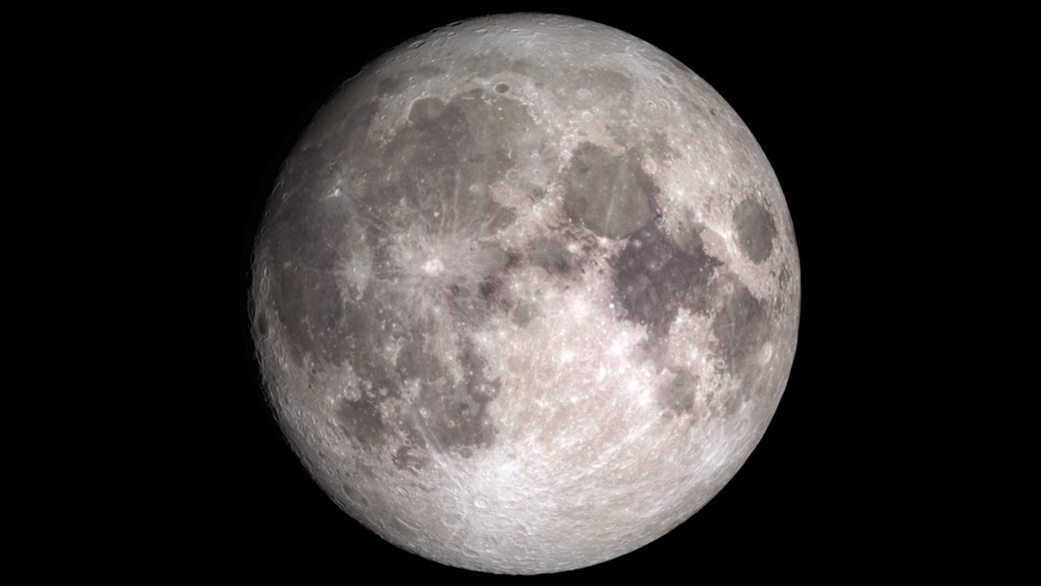Water Might Be All Over the Moon, New Research Shows

In 2009, three spacecraft confirmed that water exists on the moon, but until now, astronomers thought most of that water was confined to "cold traps" at the moon's poles. Now, a new analysis of two lunar missions throws doubt on that theory and suggests that water could actually be spread across the moon's surface.
The analysis, published in the journal Nature Geoscience on Feb. 12, could help researchers understand where the moon's water comes from and how helpful the water would be as a resource for Earth, whether it's collected for drinking water or converted into hydrogen and oxygen for rocket fuel or into air for future space explorers.
Although this new analysis doesn't give researchers a sense of how accessible the water is, it does suggest that both H2O and OH (a molecule known as hydroxyl) are spread across the moon's surface and can be found day and night. [The Search for Water on the Moon in Photos]
"We find that it doesn't matter what time of day or which latitude we look at; the signal indicating water always seems to be present," Joshua Bandfield, a senior research scientist with the Space Science Institute and lead author of the study, said in a statement from NASA. "The presence of water doesn't appear to depend on the composition of the surface, and the water sticks around."
Previous studies suggested that water and hydroxyl — a relative of H2O that's made with just one oxygen molecule and one hydrogen molecule — were found mostly at the poles in "cold traps," regions that are so cold that water vapor and other volatiles will remain stable there for up to several billion years. The researchers also found that the strength of the reflective signal used to detect water depended on the lunar day (which is equal to 29.5 Earth days), the statement said.
Bandfield and his team found a new way to use temperature information in data taken from lunar missions. Using this method, they changed the interpretation of previous studies' search for water on the moon's surface.
Water on the moon reflects sunlight at a specific wavelength — about 3 micrometers — which lies beyond visible light and in the realm of infrared radiation, NASA officials said in the statement. Remote sensors measure the strength of sunlight reflected off the lunar surface. But the moon also gets hot enough to emit its own light in the infrared spectrum, so researchers have to untangle this signal from the one coming from reflections off of water and hydroxyl. They do this by using information about the lunar temperature.
Get the Space.com Newsletter
Breaking space news, the latest updates on rocket launches, skywatching events and more!
Bandfield's team found a new, more accurate way to detect the temperature and, therefore, better disentangle signals coming from water reflections from those coming from the moon's hot surface. The new temperature model suggests that water on the moon is present mostly as hydroxyl, which would have to be extracted from minerals in order to be used.
The researchers are still working out what the data tells them about the source of water on the moon. However, they suggested that water may be created when solar winds hit the lunar surface and the hydrogen atoms in those winds react with the oxygen atoms in the lunar rocks and its dusty surface, called regolith. Nonetheless, they didn't want to discount the possibility that the water might be slowly released from minerals on the moon since its formation.
"Some of these scientific problems are very, very difficult, and it's only by drawing on multiple resources from different missions" that we can zero in on an answer, Lunar Reconnaissance Orbiter project scientist John Keller, of NASA's Goddard Space Flight Center, said in the statement.
Follow Kasandra Brabaw on Twitter @KassieBrabaw. Follow us @Spacedotcom and on Facebook. Original article on Space.com.
Join our Space Forums to keep talking space on the latest missions, night sky and more! And if you have a news tip, correction or comment, let us know at: community@space.com.

Kasandra Brabaw is a freelance science writer who covers space, health, and psychology. She's been writing for Space.com since 2014, covering NASA events, sci-fi entertainment, and space news. In addition to Space.com, Kasandra has written for Prevention, Women's Health, SELF, and other health publications. She has also worked with academics to edit books written for popular audiences.









